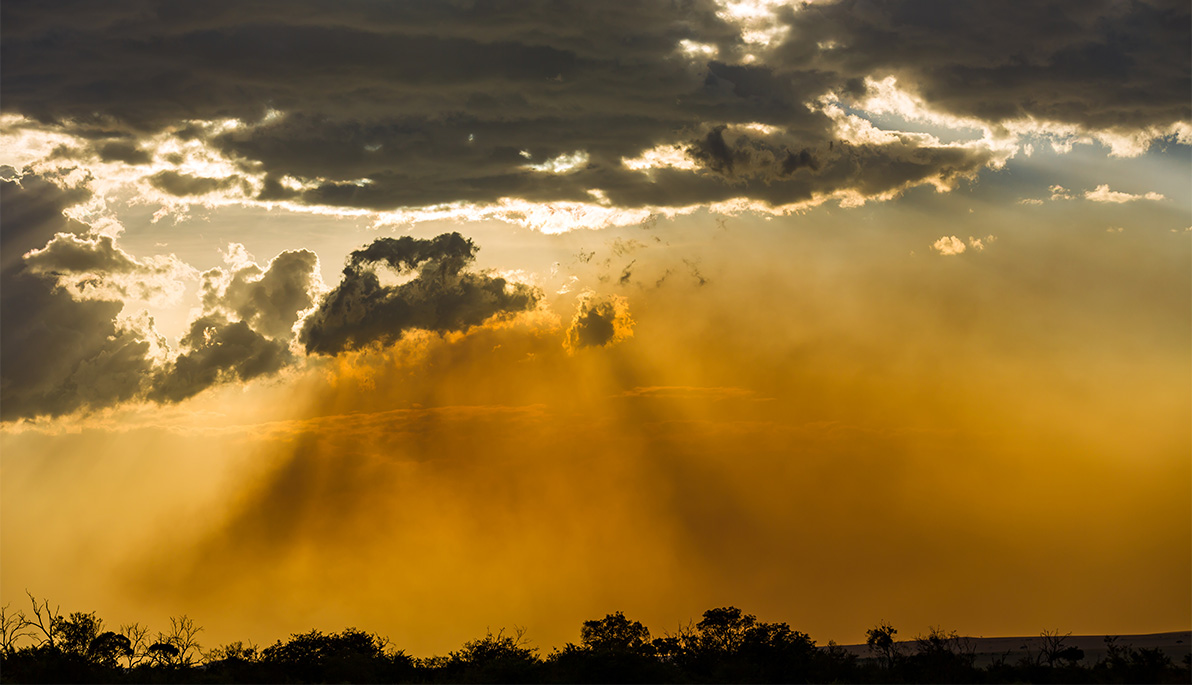News
Observing Saharan Dust Plume Impact in Northeast Arkansas
July 6, 2020
The Saharan dust plume that brought hazy skies and picturesque sunsets to Northeast Arkansas in late June may have also physically impacted Arkansans who experience respiratory issues.
Troy Camarata, Ph.D., assistant professor of basic sciences at NYITCOM-Arkansas, has been studying air quality in the region since 2018, and on Saturday, June 27, his equipment showed elevated levels of particulate matter that are thought to be one of the most harmful components of air pollution.
“We picked up actual data that correlates with what everyone observed: the hazy skies, that orange color,” Camarata said. “In terms of air quality, we were in a moderately unhealthy range for most of the day Saturday as a result of this dust plume sweeping through the state. Whatever you may have been feeling, it was measurable.”
Saharan dust plumes occur regularly as winds sweep millions of tons of dust from the East African desert and move the plumes westward. This movement often goes unnoticed throughout much of the western part of the globe, but this most recent event is one of the largest recorded dust migrations in decades. As the volume is much larger, the impact may also be more significant.
“What we’re actually measuring is particulate matter, these small little particles in the air of things that you can’t see but we can breathe in,” Camarata said. “Because they’re so small, they can be absorbed by our cells and enter our body. This dust that’s coming from the Sahara is really fine dust. It’s not like sand that you’re going to see at the beach. It’s extremely small, but it’s detectable by our research instruments. We’re breathing all of this in. Really high levels or long exposure can be harmful, especially for those who deal with asthma or cardiovascular disease.”

Assistant Professor Troy Camarata, Ph.D., checks the air quality in Jonesboro, AR for particles from the Saharan dust plume.
After seeing elevated levels of particulate matter on Saturday, Camarata said that air quality was much better in the area on Sunday and Monday, and he doesn’t believe the Saharan dust plumes will have a long-term impact on Arkansans.
“We got lucky,” Camarata said. “It appears to have come and gone. Fortunately, I don’t think it’s hanging around.”
Through his research, Camarata and his students regularly study how events such as agricultural burning impact air quality. In addition to the Saharan dust plumes, his equipment has also measured the impact of events such as wildfires in California.
“There are things that happen around the world that impact us here locally,” Camarata said. “We can’t ignore environmental impact somewhere else because it does reach us. We have to open our world a little more. There’s a world beyond our front yard, and it’s important for us to understand how all of it can affect us.”
The air quality changes were also featured by local Jonesboro, Arkansas network KAIT Region 8 News.

By Casey Pearce




